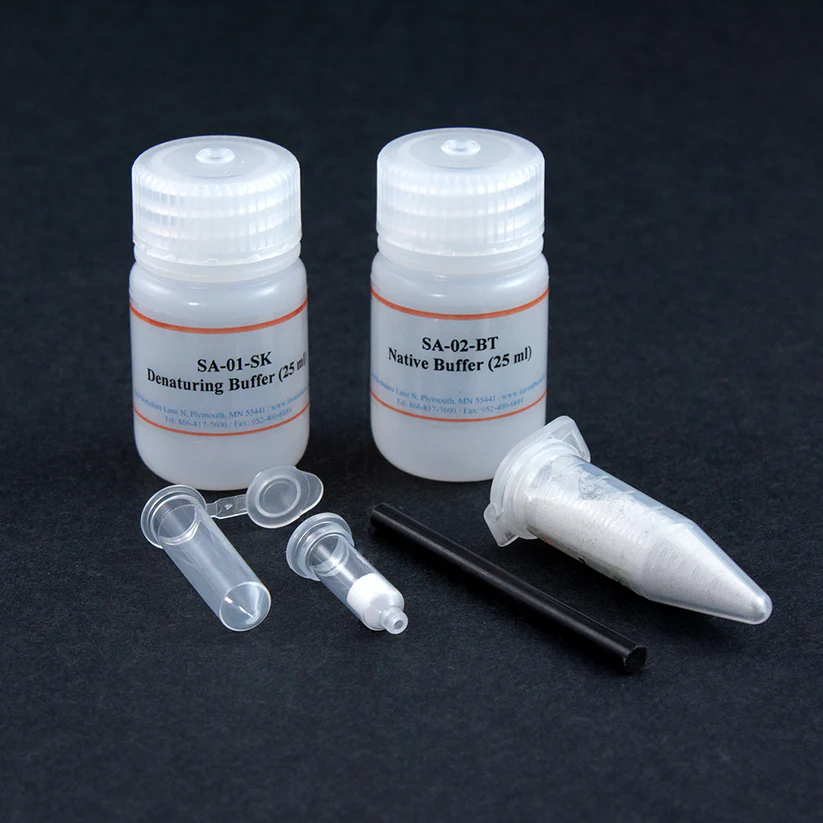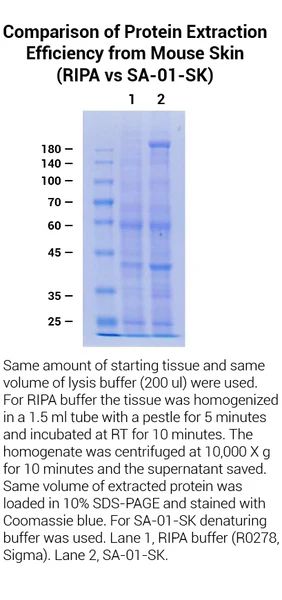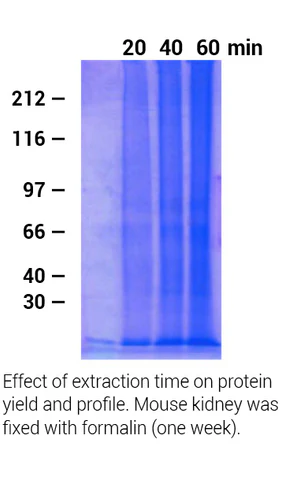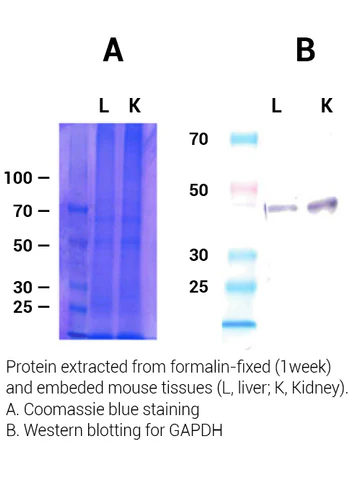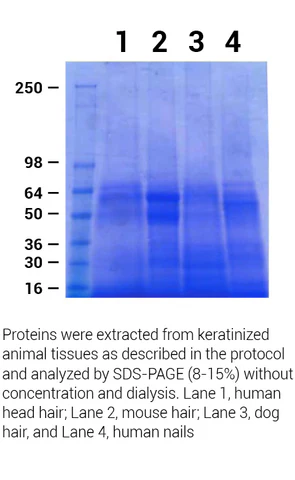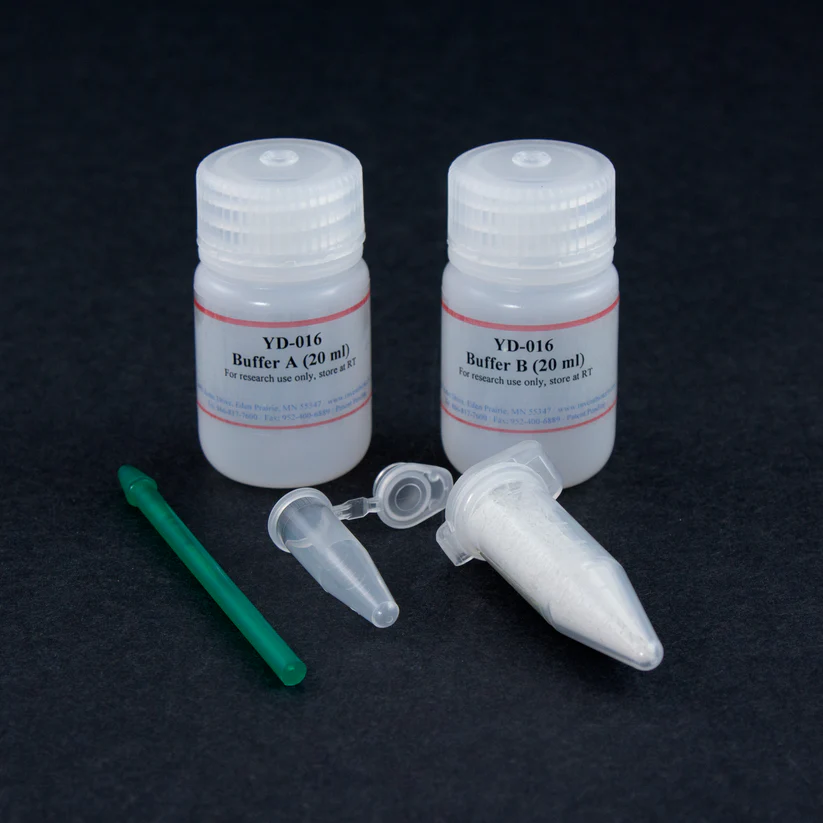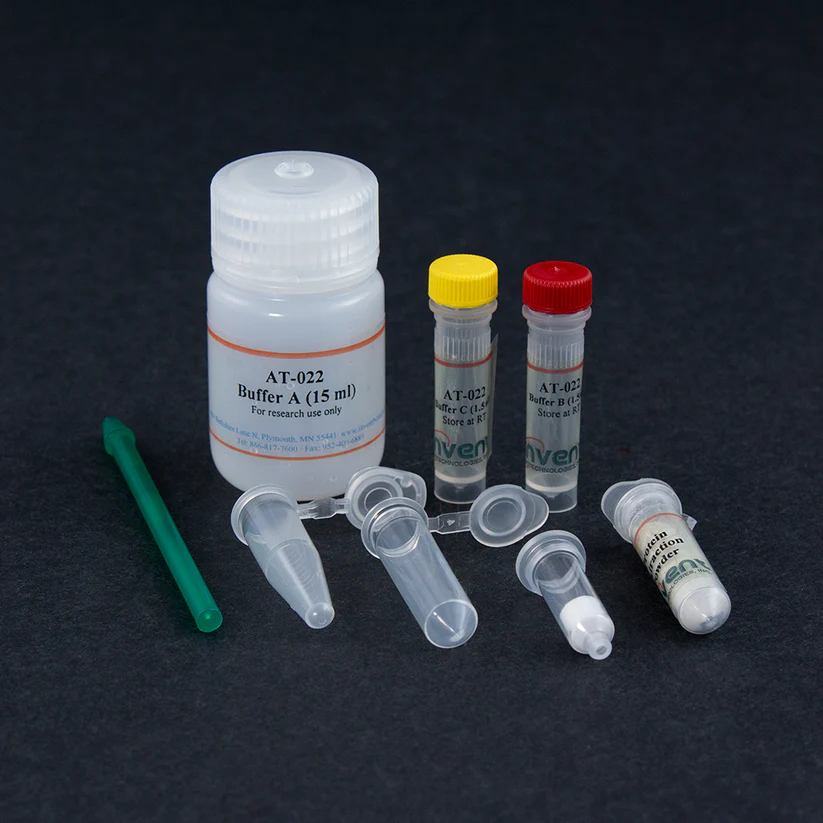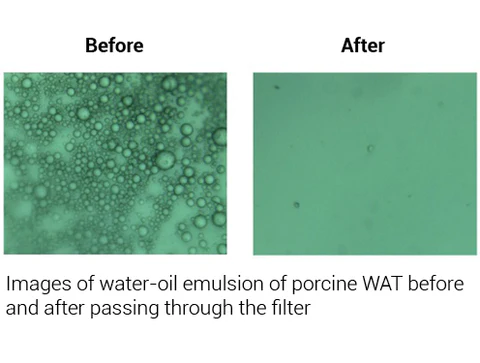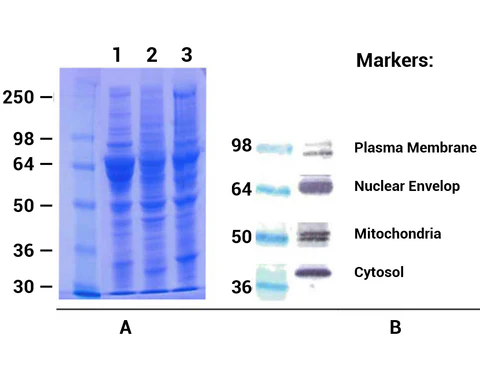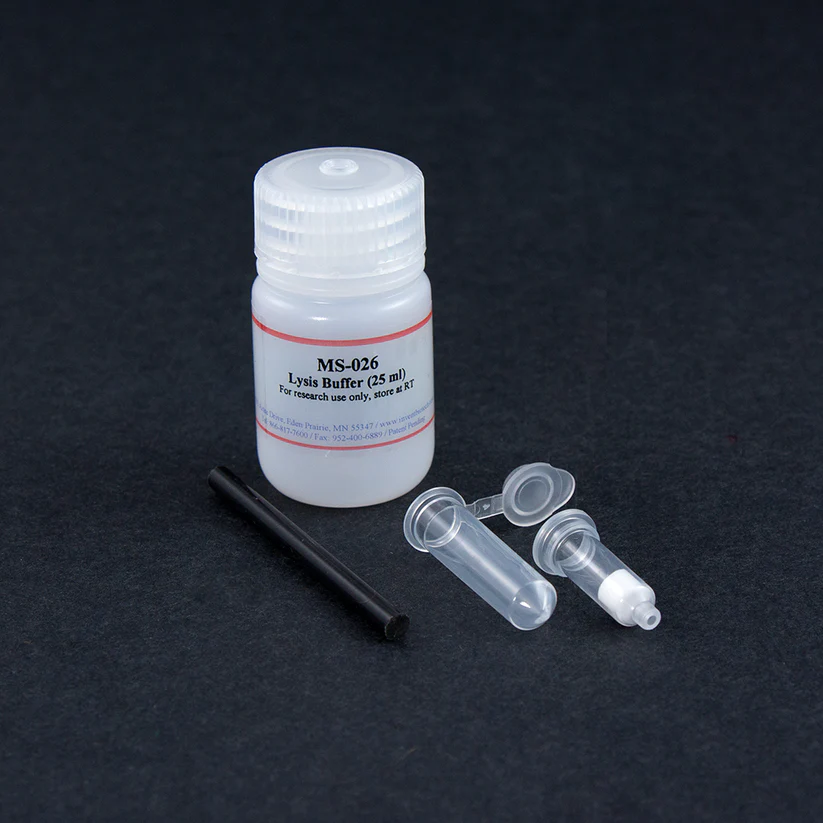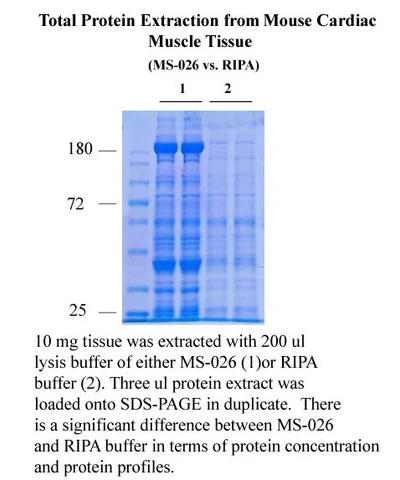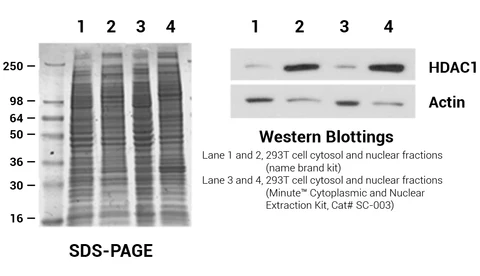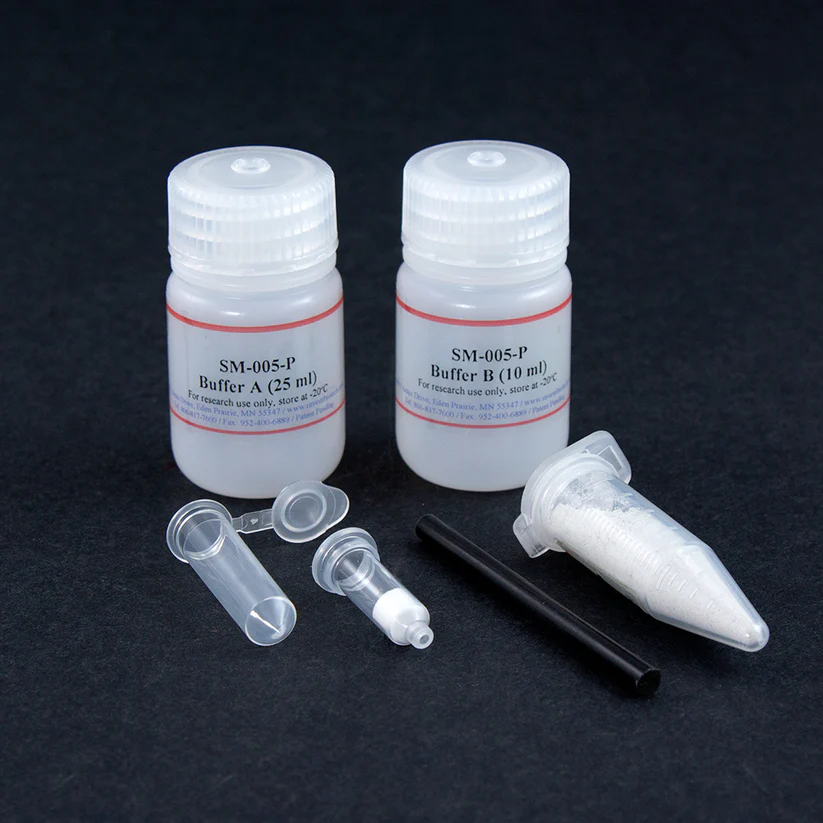
Minute™ Total Protein Extraction Kit for Bone Tissue (50 Preps)
Cat #: SA-02-BT
Description
Bone tissues are commonly used for research. There are two types of bone tissues: compact and spongy. Cells in bone tissues are tightly packed and, because of their unique structures, it is very difficult to efficiently extract total protein from them. Traditional solution-based protein extraction methods, such as RIPA, are inefficient and the protein yield is very low. The profile of extracted protein is also incomplete with solution-based methods. This kit provides a highly efficient method for extracting proteins from human or animal bone tissue by a combination of mechanical extraction and chemical lysis of cells in tissues. The kit features a simple and fast single-tube protocol and optimized buffers for bone tissue. Researchers have the option to choose either a denaturing or native cell lysis buffer, which is specifically tailored for bone tissue. The whole procedure takes less than 10 minutes to complete and the protein yield is in the range of 0.5-2 mg/ml depending upon type of bones. The materials provided are sufficient for 50 extractions.
Shipping and storage: This kit is shipped and stored at room temperature.
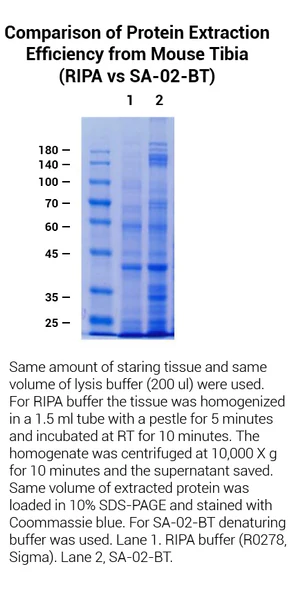
Kit includes:
Items | Quantity |
Denaturing Buffer | 25 ml |
Native Buffer | 25 ml |
Protein Extraction Powder | 5g |
Plastic Rods | 2 units |
Filter Cartridges | 50 units |
Collection Tubes | 50 units |
References (10):
1. Ren, H., Wang, Z., Xu, J., Chen, J., & Lan, J. (2020). The Impact of Frizzled-9 on Dental Implant Osseointegration in Hyperlipidemic Rats. Journal of Hard Tissue Biology, 29(1), 37-44.
2. Pedersen, K. B., Osborn, M. L., Robertson, A. C., Williams, A. E., Watt, J., Denys, A., … & Ronis, M. J. (2020). Chronic Ethanol Feeding in Mice Decreases Expression of Genes for Major Structural Bone Proteins in a Nox4-Independent Manner. Journal of Pharmacology and Experimental Therapeutics, 373(3), 337-346.
3. Liu, H. D., Ren, M. X., Li, Y., Zhang, R. T., Ma, N. F., Li, T. L., … & Yang, M. (2022). Melatonin alleviates hydrogen peroxide induced oxidative damage in MC3T3-E1 cells and promotes osteogenesis by activating SIRT1. Free Radical Research, (just-accepted), 1-19.
4. Jiang, C., Lin, Y., Shan, H., Xia, W., Pan, C., Wang, N., … & Yu, X. (2022). miR-146a Protects against Staphylococcus aureus-Induced Osteomyelitis by Regulating Inflammation and Osteogenesis. ACS Infectious Diseases.
5. Song, D., Ha, C. Z., Xu, Q., & Hu, Y. H. (2022). mRNA expression profiling of the cancellous bone in patients with idiopathic osteonecrosis of the femoral head by whole-transcriptome sequencing. Medicine, 101(35), e30213.
6. Deng, J., Cohen, D. J., Sabalewski, E. L., Van Duyn, C., Wilson, D. S., Schwartz, Z., & Boyan, B. D. (2022). Semaphorin 3A Delivered by a Rapidly Polymerizing Click Hydrogel Overcomes Impaired Implant Osseointegration in a Rat Type 2 Diabetes Model. Acta Biomaterialia.
7. He, H., Zhang, Y., Sun, Y., Zhang, Y., Xu, J., Yang, Y., & Chen, J. (2022). Folic Acid Attenuates High-Fat Diet-Induced Osteoporosis Through the AMPK Signaling Pathway. Frontiers in cell and developmental biology, 9, 3661.
8. Choi, R. Y., Kim, I. W., Ji, M., Paik, M. J., Ban, E. J., Lee, J. H., … & Seo, M. (2023). Protaetia brevitarsis seulensis larvae ethanol extract inhibits RANKL-stimulated osteoclastogenesis and ameliorates bone loss in ovariectomized mice. Biomedicine & Pharmacotherapy, 165, 115112.
9. Liu, Z., Yao, X., Jiang, W., Zhou, Z., & Yang, M. (2023). Sodium butyrate enhances titanium nail osseointegration in ovariectomized rats by inhibiting the PKCα/NOX4/ROS/NF-κB pathways. Journal of Orthopaedic Surgery and Research, 18(1), 1-14.
10. Zhang, C. X., & Man, Q. W. (2024). Proteomics study of bone tissue around ameloblastoma and the potential mechanism of CD36 in bone remodelling. British Journal of Oral and Maxillofacial Surgery.



